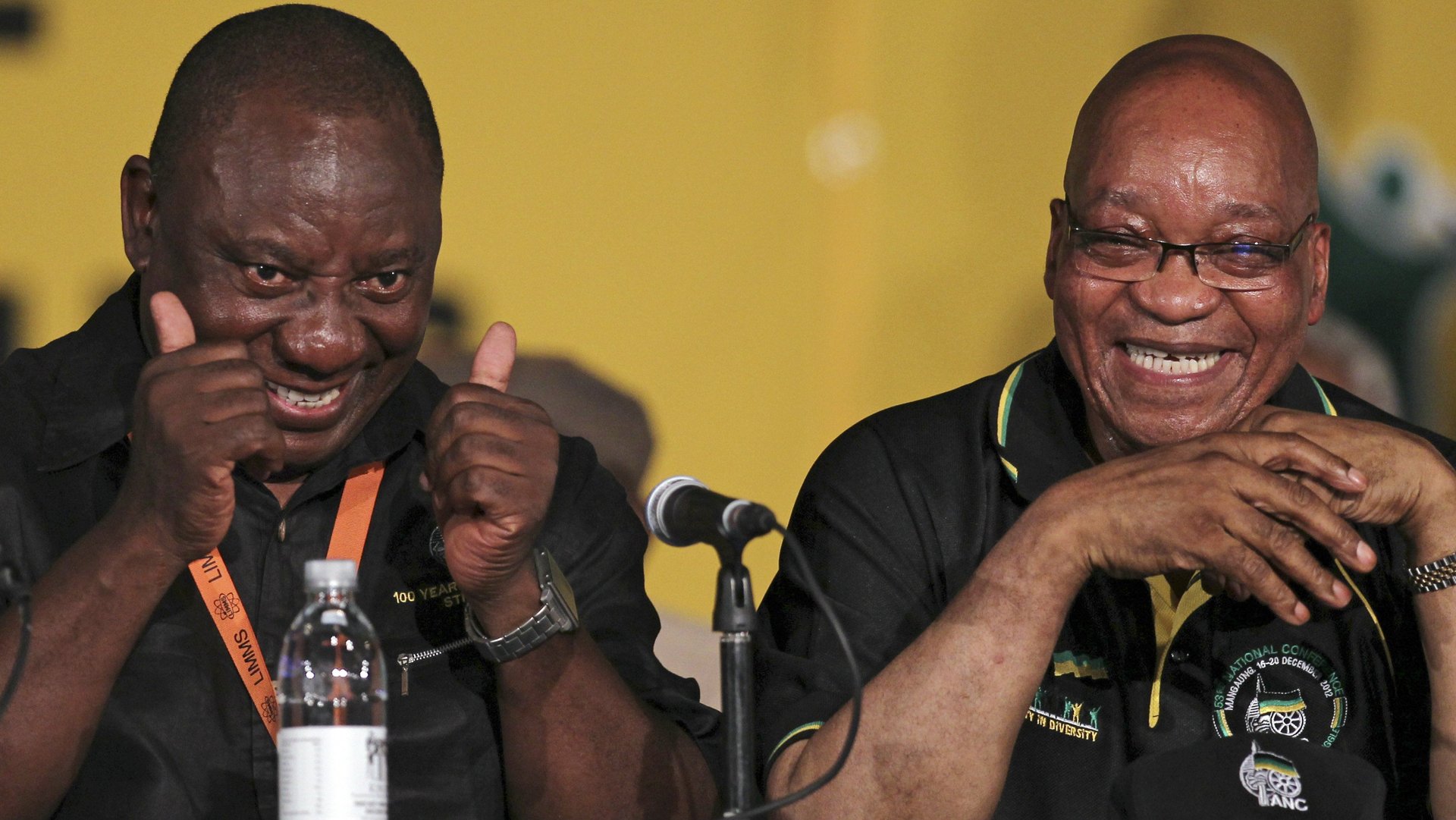Has Mandela’s chosen one scaled the last hurdle to be South Africa’s next president?
This week South Africa’s president, Jacob Zuma, released the long-awaited three-year probe into the killing of 34 miners during a labor dispute with the world’s fourth-largest platinum producer, Lonmin in August 2012.


This week South Africa’s president, Jacob Zuma, released the long-awaited three-year probe into the killing of 34 miners during a labor dispute with the world’s fourth-largest platinum producer, Lonmin in August 2012.
The probe found the South African Police Service (SAPS) were mostly to blame for the Marikana Massacre, citing a “defective policing plan” gone wrong.
While the findings against the police were expected, it was the controversial involvement of South Africa’s deputy-president, Cyril Ramaphosa that was on everybody’s lips. Ramaphosa, 62, is widely tipped to be South Africa’s next president when Zuma’s term ends in 2019.
Before ascending to power, Ramaphosa–one of South Africa’s richest men–had a 9% stake in Lonmin. In the days leading up to the massacre, Ramaphosa sent a number of emails (pdf) to the then minister of mineral affairs, Susan Shabangu, asking her and the minister of police, Nathi Mthethwa, to apply “concomitant action” and “act in a more pointed way” against the striking miners. According to Ramaphosa, the actions of the miners were ”dastardly criminal” and could not be considered as an industrial issue.
During the commission, the defense team of the slain miners argued Ramaphosa had used his proximity to political power to agitate for police to act in a violent manner against the miners. Although he was not in government at the time, Ramaphosa was deputy-president of the country’s governing party, the African National Congress (ANC). This position gave him access to senior government officials, like the minister of police and minister of mineral affairs.
Off the hook
The commission found Ramaphosa could not be held liable for the police’s actions, as the massacre was a result of a defective policing plan and the improper use of force, which led to the mass killing of 34 miners on 16 August 2012.
Ramaphosa first rose to prominence in the 1980s as a unionist, after co-founding the National Union of Mineworkers (NUM). After late president Mandela’s release, he was given the responsibility to oversee the writing of South Africa’s new constitution on behalf of the ANC. Despite being Mandela’s favourite for a successor, he left politics in 1997, after a feud over Mandela’s succession plan, to pursue business interests–becoming one of the first beneficiaries of South Africa’s Black Economic Empowerment policy.
He swung back in 2012, left business, and was elected as South Africa’s deputy-president in 2014. His political comeback has left many speculating that he may be determined to become South Africa’s next president. In 2013 New York Times asked if he was the best president South Africa had not yet had.
But Ramaphosa is not entirely off the hook. South Africa’s third-largest opposition party, the Economic Freedom Fighters (EFF)–known for being a thorn in Ramaphosa’s flesh over the massacre–has vowed to pursue civil charges against him.
“We can guarantee all South Africans that EFF will never rest until those responsible, particularly the political elite that presided over the police, including Cyril Ramaphosa, are prosecuted and sent to jail.” said the EFF in a press statement responding to the findings of the Commission.